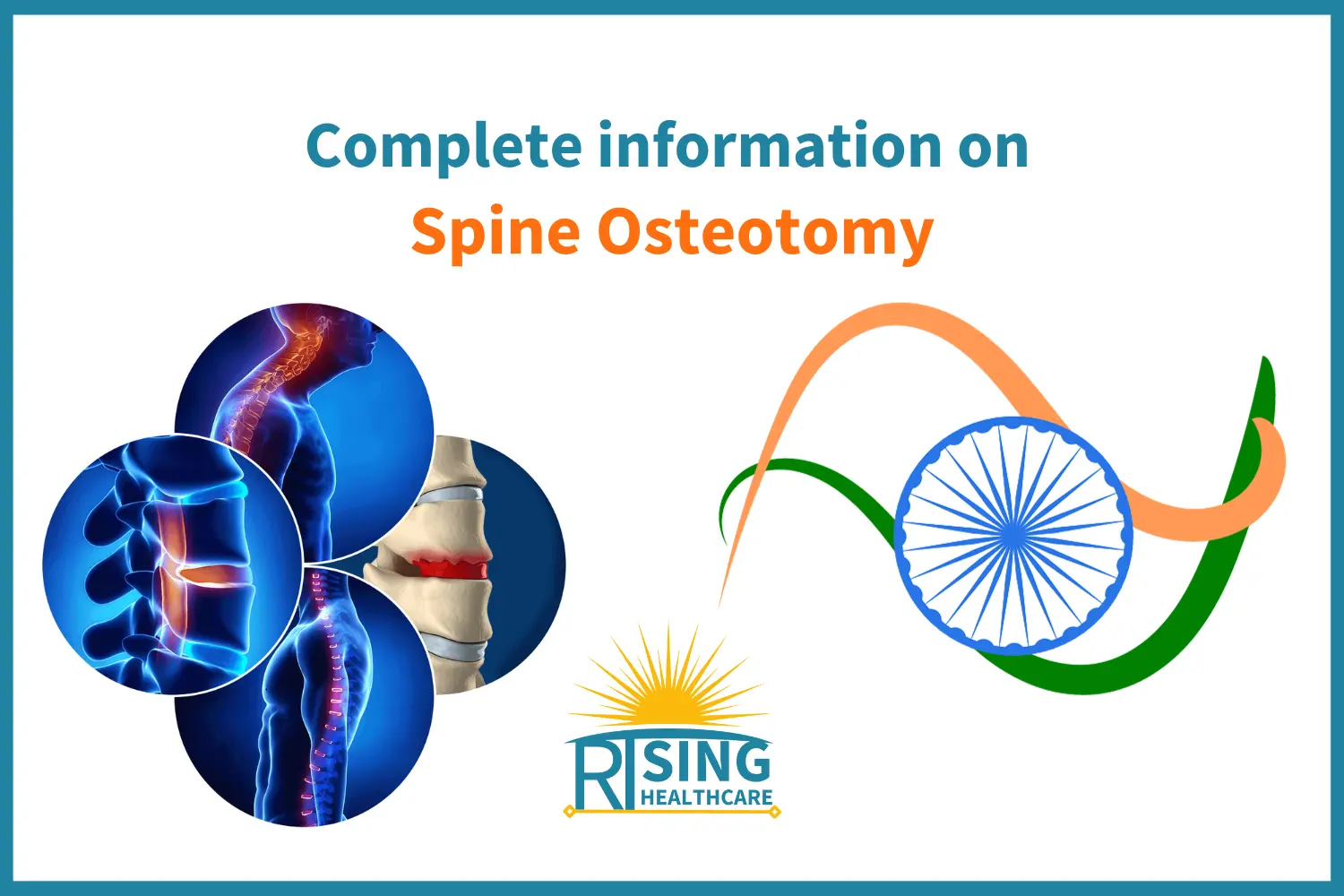
Understanding Spine Osteotomy: Types and Benefits
Introduction
The human spine is an incredible structure that provides support and flexibility to our bodies. However, it’s not uncommon for people to experience spine-related problems, such as deformities, injuries, or chronic conditions. In some cases, surgical interventions are necessary to alleviate pain and improve the quality of life. One such surgical technique is spine osteotomy. In this article, we’ll explore the different types of spine osteotomy, with a focus on three-column osteotomy, cervical osteotomy, and vertebral osteotomy. We’ll break down these complex terms into simple language to help you understand the procedures and their benefits.
Contents
Three Column Osteotomy
Let’s start by discussing what three-column osteotomy is and how it can benefit individuals with spinal issues. To put it simply, three-column osteotomy is a surgical procedure that involves cutting and reshaping three key components of the spine to correct deformities and restore its proper alignment. These three components are:
1.1. The Anterior Column: This is the front part of the spine and consists of the vertebral bodies and discs. Surgeons may need to remove a portion of the vertebral bodies or adjust their alignment during three-column osteotomy.
1.2. The Middle Column: The middle column includes the posterior longitudinal ligament, the posterior part of the vertebral bodies, and the intervertebral discs. Adjustments to this column may involve removing bone or ligament tissue to allow for proper alignment.
1.3. The Posterior Column: The posterior column is located at the back of the spine and consists of the spinous processes, laminae, facet joints, and other structures. Surgeons may need to modify these elements to achieve the desired correction during three-column osteotomy.
The main objective of three-column osteotomy is to correct severe spinal deformities, such as kyphosis or scoliosis, by repositioning the spine and restoring a more natural curvature. This procedure can significantly improve a patient’s quality of life by reducing pain, improving posture, and enhancing mobility.
Benefits of Three-Column Osteotomy:
1.4. Pain Relief: One of the primary benefits of three-column osteotomy is pain relief. Deformities of the spine can lead to chronic back pain, and this procedure can alleviate that pain by correcting the alignment of the spine.
1.5. Improved Mobility: Patients who undergo three-column osteotomy often experience improved mobility and flexibility. This can allow them to engage in activities they may have previously been unable to do.
1.6. Better Quality of Life: Correcting spinal deformities can significantly enhance a patient’s overall quality of life. They may find it easier to perform daily tasks and enjoy a higher level of physical and emotional well-being.
Cervical Osteotomy
Moving on to cervical osteotomy, this is a specialized form of spine osteotomy that focuses on the cervical spine, which is the uppermost portion of the spinal column, encompassing the neck region. Just like three-column osteotomy, cervical osteotomy involves surgical adjustments to correct deformities and restore proper spinal alignment in the cervical region.
The cervical spine is particularly delicate and vital as it houses the spinal cord, which carries signals between the brain and the rest of the body. Therefore, any issues in this region can have significant implications for a person’s health and well-being.
Cervical Osteotomy Procedure:
During a cervical osteotomy, the surgeon will carefully access the cervical spine through the front of the neck (anterior approach). They will remove or adjust the problematic bone or tissue, allowing for proper alignment. In some cases, they may also use implants or bone grafts to maintain the corrected position.
Benefits of Cervical Osteotomy
2.1. Correcting Neck Deformities: Cervical osteotomy is especially useful for correcting neck deformities, such as cervical kyphosis or lordosis. These deformities can lead to pain, difficulty in swallowing, and even breathing problems, so correcting them can greatly improve a patient’s quality of life.
2.2. Preserving Spinal Cord Function: Since the cervical spine houses the spinal cord, any deformities or misalignments in this region can put pressure on the spinal cord, potentially leading to neurological problems. Cervical osteotomy helps relieve this pressure and preserves spinal cord function.
2.3. Improved Neck Mobility: Patients who undergo cervical osteotomy often experience improved neck mobility, which can enhance their ability to perform daily activities, including looking up and down, turning the head, and maintaining a comfortable neck posture.
Vertebral Osteotomy
Lastly, let’s explore vertebral osteotomy, which is another type of spine osteotomy. Vertebral osteotomy focuses on specific vertebrae within the spine, rather than the entire spinal column. This procedure is often used to address localized issues, such as fractures, tumors, or deformities affecting individual vertebrae.
Vertebral Osteotomy Procedure
During a vertebral osteotomy, the surgeon will make an incision near the affected vertebrae and carefully remove a portion of the bone. They may also use specialized tools to realign the vertebra and secure it in the correct position. Vertebral osteotomy is a precise procedure that targets the source of the problem while preserving the surrounding healthy spinal structures.
Benefits of Vertebral Osteotomy
3.1. Targeted Correction: Vertebral osteotomy allows for targeted correction of specific spinal issues. This means that only the affected vertebrae are addressed, minimizing disruption to the rest of the spine.
3.2. Pain Relief: By correcting problems like fractures or tumors, vertebral osteotomy can provide significant pain relief to patients. Pain caused by spinal issues can be debilitating, and this procedure aims to alleviate it.
3.3. Preservation of Spinal Function: Since vertebral osteotomy is a focused procedure, it aims to preserve as much of the healthy spinal structure as possible. This is crucial for maintaining overall spinal function and mobility.
Conclusion
In summary, spine osteotomy is a surgical technique used to correct various spinal issues, including deformities, injuries, and chronic conditions. Three-column osteotomy involves reshaping three critical components of the spine to achieve proper alignment, providing pain relief, improved mobility, and a better quality of life for patients. Cervical osteotomy specifically targets the cervical spine, correcting neck deformities, preserving spinal cord function, and enhancing neck mobility. Vertebral osteotomy, on the other hand, focuses on individual vertebrae, offering targeted correction, pain relief, and preservation of spinal function.
If you or a loved one are facing spine-related problems, it’s essential to consult with a qualified orthopedic surgeon or spine specialist to determine the most appropriate treatment plan. They can provide personalized guidance and discuss the benefits and potential risks of spine osteotomy or other treatment options based on your specific condition. Ultimately, spine osteotomy procedures can be life-changing for individuals seeking relief from spinal issues, restoring their mobility and overall well-being.

